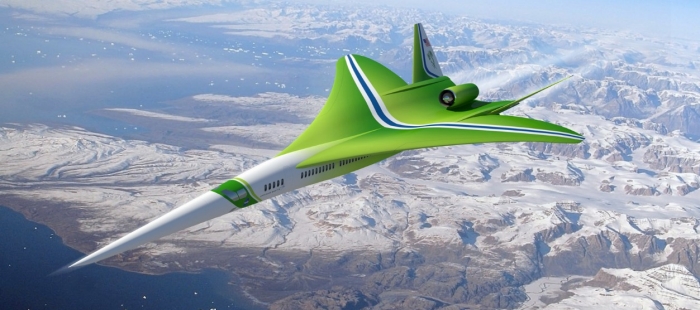A s I first reported in this article on September 28, 2014, Aerion Supersonic has partnered with Airbus Group in an agreement to collaborate on technologies to advance the development and commercialization of the Aerion AS2 — to become the first supersonic business jet in the world capable of transporting up to 12 passengers — for the possibility of high-performance supersonic flights in the future, according to this press release.
Not to be outdone, Lockheed Martin is currently working with NASA — the National Aeronautics and Space Administration of the United States — on a design for a supersonic aircraft which could carry a maximum of 80 passengers called the N+2. It will supposedly be capable of cruising at Mach 1.7, which is 1.7 times the speed of sound:
With the commercial air travel industry expected to grow to more than five times its current size, the economic impact and significant time savings of a more efficient supersonic travel system will become increasingly important in our global economy.
When I was a passenger on Concorde during its last week of regular commercial operation by Air France back in May of 2003, the indicator within the aircraft displayed a reading of Mach 2.01 — or slightly greater than twice the speed of sound. That experience was one of the best uses of my frequent flier loyalty program miles by far. However, the sonic boom produced by Concorde was approximately 100 times noisier than the sound which is expected to be produced by the N+2 — meaning that that aircraft could possibly be permitted by the Federal Aviation Administration of the United States to fly over land:
Lockheed Martin’s design would accommodate 80 passengers and have the ability to travel more than 5,000 nautical miles with sonic boom levels one hundred times quieter than the now-retired Concorde supersonic passenger airline.
If you are hoping to be a passenger on the N+2 anytime soon, that is not going to happen — unless you consider 2025 soon; and although that is greater than ten years away, the year in which the Aerion Supersonic aircraft could be introduced into commercial service as soon as 2021, which is four years earlier.
Back in 2008, there was talk of supersonic aircraft possibly returning to commercial service as soon as 2015; but it is a safe bet that that is not going to happen — and neither is what was being called in 2007 Concorde 2.0.
However — if and when supersonic travel does return to commercial service — do not expect airfares to be low enough where you can afford to fly as a passenger on either of these supersonic airplanes; and do not expect to be able to redeem frequent travel loyalty program miles or points for the experience either…
…at least, not initially when the airplanes are introduced into commercial service…
Image courtesy of Lockheed Martin.
